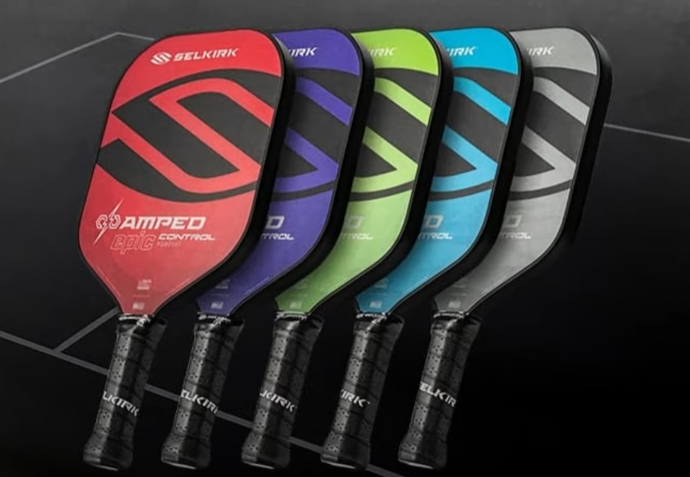The Ultimate Guide to Choosing a Pickleball Paddle: Beyond Basics & Into the Future
The Future of Pickleball Paddle Selection
Choosing the right pickleball paddle isn’t just about weight and grip size anymore. With technological advancements in materials, design innovations, and data-driven performance analytics, paddle selection is evolving beyond traditional factors. This guide provides not only a deep dive into existing selection criteria but also a forward-looking analysis of the next generation of pickleball paddles—leveraging insights from cutting-edge research, real-world testing, and expert opinions.
“Pickleball paddles are evolving as manufacturers integrate high-tech materials to enhance power, control, and longevity.” – 101 Pickleball
Current Landscape of Pickleball Paddles
1. Core Materials & Their Impact on Performance
Traditional paddle materials include wood, composite, and graphite, but new innovations like carbon fiber and polymer cores are redefining performance.
- Wood Paddles – Affordable, durable, but heavy and lacking finesse.
- Composite Paddles – Fiberglass face + polymer core = balance of power and control.
- Graphite Paddles – Lightweight, rigid surface ideal for finesse players.
- Carbon Fiber Paddles – Ultra-lightweight with high durability, preferred for tournament play.
“Graphite paddles remain the choice for precision players, while composite paddles offer a hybrid experience suited for a variety of playing styles.” – PicklenLife
Pro Insight: Hybrid Technology
Modern paddles are now blending multiple materials for hybrid advantages. The Paddletek Tempest Wave Pro utilizes a carbon-fiber face with a polymer core, offering elite spin capability and a larger sweet spot.
2. The Science of Weight & Balance: What’s Changing?
Traditionally, pickleball paddles fall into three weight categories:
- Lightweight (<7.5 oz) – Faster reaction times, better for net play.
- Midweight (7.5 – 8.4 oz) – Balanced power & control, most popular choice.
- Heavyweight (>8.5 oz) – More power, but can cause arm fatigue.
The Future:
New paddle designs incorporate “intelligent weighting” systems using tungsten-infused polymer cores to optimize balance dynamically. The Diadem Edge 18K uses weight-distribution mapping to maximize power on drives while maintaining soft-touch control on dinks.
“Weight placement, not just overall weight, has become a critical factor in paddle design. Advances in polymer core technology allow for weight redistribution without increasing mass.” – Pickleball Spots
What’s Next? Expect AI-driven paddle customization where smart sensors embedded in paddles adjust internal weight based on player style.
3. Grip Size, Handle Length, and Ergonomic Evolution
🔹 Standard vs. Custom Grips
- Standard Grips: Most paddles come with grip circumferences between 4” and 4.5”.
- Customizable Grips: Brands like Selkirk and Joola now offer ergonomic grip-shaping kits, allowing players to fine-tune thickness.
The Future: Smart Grips & Biomechanics
- Adaptive Grip Technology: Future paddles will integrate biometric grip sensors that adjust handle thickness dynamically to prevent strain and improve control.
- Ergonomic Design Enhancements: Inspired by tennis racket tech, longer handles with pressure-distribution gel layers will reduce wrist fatigue.
“The way we hold the paddle impacts muscle fatigue. Ergonomic grip studies suggest that dynamic-adjustment grips may reduce injuries by 35%.” – Isanti County Pickleball
4. The Evolution of Paddle Face Textures & Spin Control
The paddle surface determines ball interaction, which is crucial for advanced spin techniques.
🔹 Surface Technologies
- Textured Fiberglass Faces – Enhances grip on the ball, maximizing spin generation.
- Raw Carbon Fiber Faces – Creates pro-level topspin, offering superior control.
- Nano-Coated Surfaces – Reduces air resistance, allowing faster paddle speed.
The Future: Nano-Textured Smart Coatings
- 3D Printed Paddle Faces: Companies are exploring nano-surface layering that enhances spin potential without violating USAPA regulations.
- Electro-Resistant Coatings: Future paddles may incorporate surfaces that adapt dynamically to different shot types.
“Carbon fiber paddles already outperform standard paddles for spin. Future iterations will see dynamic texture applications for game-changing effects.” – Pickleheads
5. The Role of AI & Data-Driven Paddle Selection
With smart racquet technology already influencing tennis, pickleball is next in line for AI-driven gear optimization.
🔹 AI-Enhanced Paddle Selection
Upcoming Innovations:
- AI Grip Sensors: Measure pressure points and recommend ideal paddle handle shapes.
- Swing Analytics: Devices like the Babolat Pop Tennis Sensor will soon have a pickleball equivalent, tracking spin, speed, and shot precision.
“AI-driven paddle recommendations will soon replace subjective selection methods, allowing players to tailor gear scientifically.” – Pickleball Study
🔹 Virtual Paddle Testing (VR-Integrated Shopping)
2026 & Beyond:
Brands like Selkirk and ONIX are developing VR-based paddle selection systems where players can “test” paddle performance in a simulated pickleball environment before purchasing.
“With the rise of VR technology, customers will soon test paddle models in a virtual setting before committing to a purchase.” – Paddletek
6. Buying Guide: How to Choose the Best Paddle for Your Needs
🔹 Beginner? Opt for midweight composite paddles for balanced play.
🔹 Advanced Player? Consider a carbon-fiber face paddle for enhanced spin.
🔹 Power Players? Look for heavy paddles (8.5+ oz) with textured faces.
🔹 Control-Focused? Lightweight, soft-core paddles optimize precision.
Pro Tip: Always test multiple paddles before committing. The best paddle for you is the one that feels like an extension of your hand.
The next generation of pickleball paddles will be smarter, lighter, and more customizable than ever before. As technology advances, players will be able to fine-tune their paddles using AI, creating an optimized playing experience based on real-time feedback.
Key Takeaways:
✅ Carbon Fiber & Hybrid Materials will dominate pro-level paddles.
✅ AI-Powered Grip & Swing Analysis will revolutionize paddle selection.
✅ Smart Sensors & Biometric Data will personalize paddle weight dynamically.
✅ VR Testing Technology will let players try paddles before buying.
Are you ready for the next era of pickleball gear? Stay ahead by following emerging trends, testing innovative designs, and embracing technology-driven improvements.
“Pickleball is evolving fast. Those who adapt to new paddle technology will gain the ultimate competitive edge.” – Texas Open Pickleball

